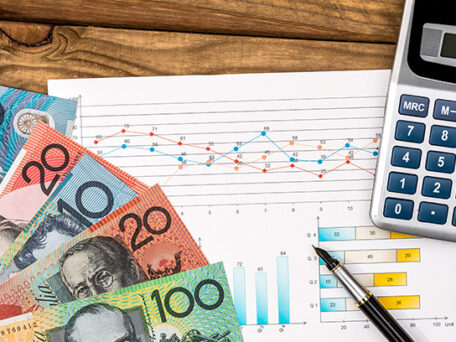
The latest official data shows inflation slowed from 4.9 per cent over the year to October to 4.3 per cent over the year to November.
The Australian Bureau of Statistics (ABS) says this is the slowest annual rate of price rises since January 2022.
Economists were generally expecting the Consumer Price Indicator to show price rises of 4.4 per cent over the year to November, so the data will likely add further weight to sentiment that the Reserve Bank has finished raising interest rates.
The decline in inflation was more modest when the most volatile prices, such as fuel, fruit and vegetables, and holiday travel were excluded, dropping from 5.1 per cent in October to an annual rise of 4.8 per cent in November.
The “trimmed mean”, which does a similar exercise of stripping out volatile price moves and is the RBA’s preferred measure, fell from 5.3 to 4.6 per cent.
“Before the release, the rates market assigned a 100 per cent chance of an RBA rate cut in August before another 25-basis-point rate cut by December,” observed IG market analyst Tony Sycamore.
“Today’s fall in the trimmed mean and the core measure, below 5 per cent, confirms that the disinflation narrative remains firmly in place and expectations of RBA rate cuts in 2024.
“If fourth quarter inflation data scheduled for release at the end of the month paints a similar picture, there is a good chance that expectations of the RBA’s first rate cut are brought forward to June, with a third rate cut added into the rates market for 2024.”
But many local economists think traders are too optimistic about the speed with which central banks will move to cut rates.
“We don’t see any cuts until at least late 2024,” ANZ senior economist Catherine Birch told ABC News Channel.
“We have seen in past cycles, inflation come down but then pick up again if rates are eased too quickly or are not high enough.
“We think at the moment we are in the right spot.”
Source: Inflation falls to the lowest level in almost two years, Michael Janda and Emilia Terzon for ABC News.
